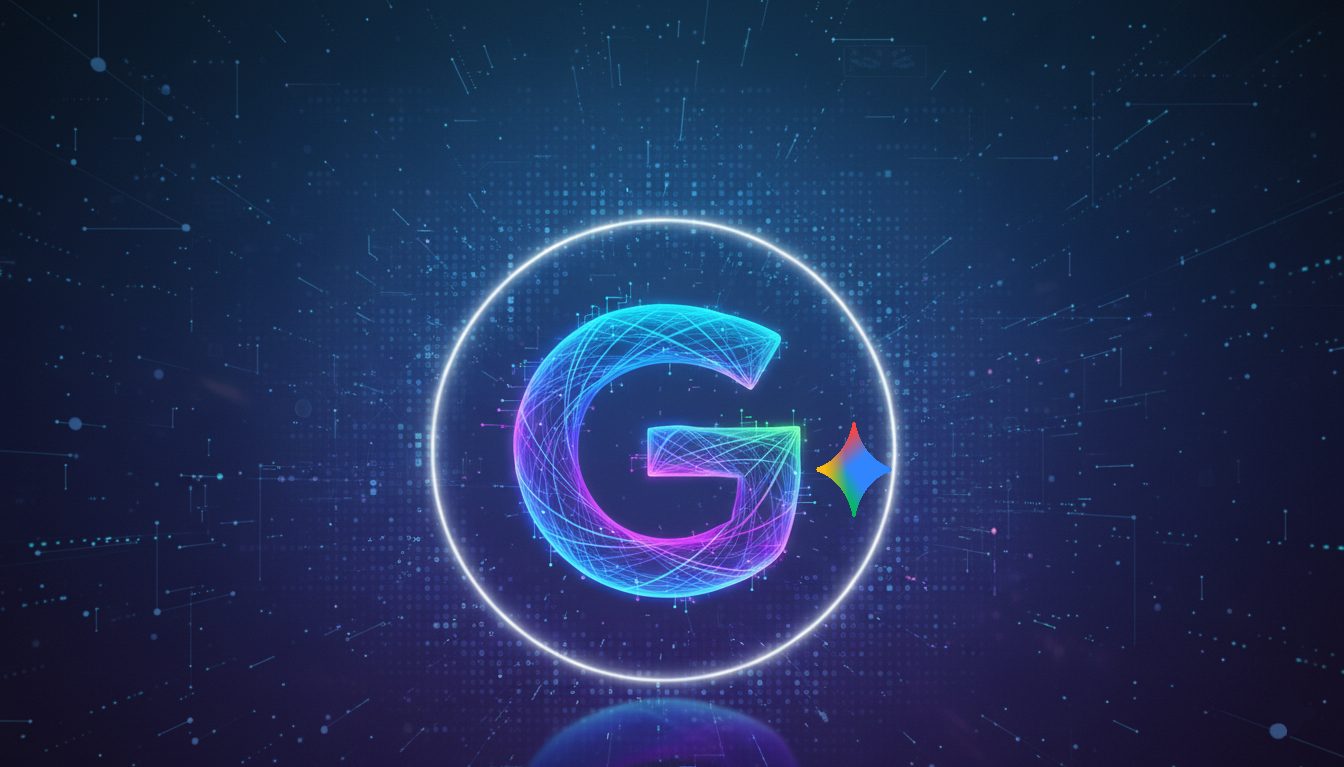Does your website feel like a five-star restaurant with a revolving door? Do customers keep coming in, but few are sitting down to order?
In the online world, that’s a missed opportunity – and it’s where website conversion becomes your secret ingredient.
In this guide, you’ll learn how to decipher what makes a good conversion rate, various ways to measure it, and top-performing examples of websites that get it right.
Let’s show you a complete playbook for website conversion success.
So, what is website conversion?
Let’s start with clarifying website conversion for you. It’s the desired action a visitor takes on your site – your conversion goal. This includes actions that generate value for your business.
Think of it as the moment a visitor transitions from a casual browser to an engaged participant. They could be making a purchase, signing up for your newsletter, or downloading a valuable resource. Each of these completed actions marks a successful conversion process.
Common examples of website conversions are:
- Sales: The ultimate goal for many e-commerce sites.
- Leads: Gathering contact details for future sales.
- Engagement: Actions like video views or social shares that indicate interest.
Understanding your specific conversion goals and tracking progress is vital for any successful digital marketing strategy. It offers a window into your customer experience and helps align your website with your broader marketing goals.
Pro Tip: Partnering with a skilled digital marketing team can unravel the complexities of website conversion, offering expert guidance to optimize your strategies.
What is a good website conversion rate?
A good rate can vary widely depending on your industry, the type of action you want visitors to take, and even the source of your website traffic.
Think of it like this: You wouldn’t compare the sales figures of a neighborhood pet store to a large supermarket chain, right? The same principle applies to website conversions.
Ecommerce Conversion Rates

For Ecommerce sites, a typical conversion rate hovers around 2.5% to 3%. This means that roughly 2 or 3 out of every 100 visitors make a purchase. However, this is just an average, and your results can be higher or lower depending on your niche and target audience.
B2B Websites
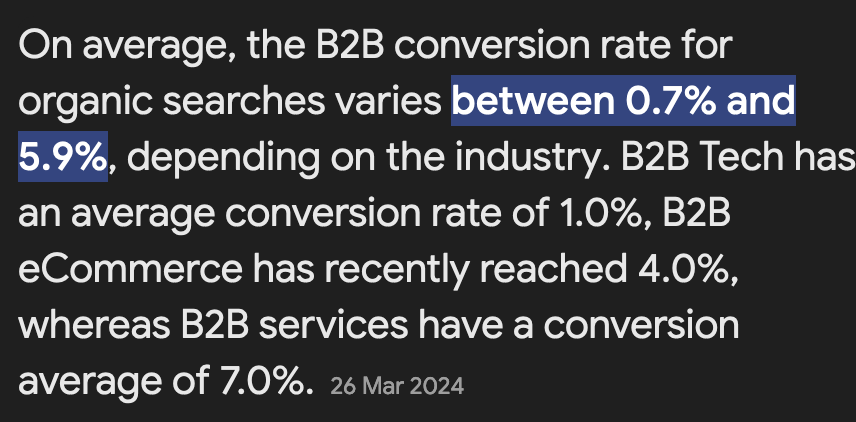
In the world of B2B, conversion rates can vary wildly from 0.7% to 5.9%, depending on factors like industry, product complexity, and the length of the sales cycle.
Overall industry average
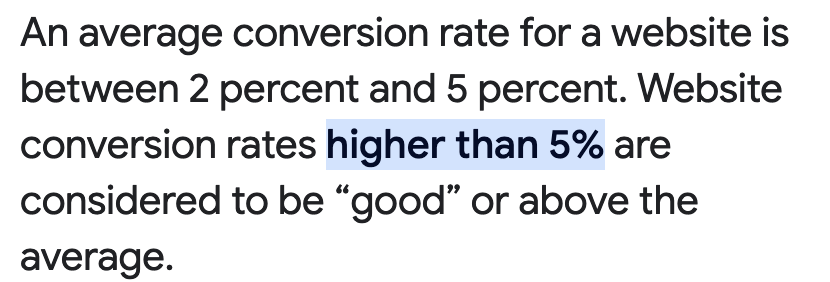
For most other industries, the average website conversion rate falls between 2% and 5%. But again, this is just a starting point. Various factors can influence your specific results.
This information is taken from the Google winning snippet.
Understanding conversion rates

Conversion rates measure the effectiveness of converting potential clients into actual customers. They help gauge the success of your marketing and sales tactics, and show where there might be room for improvement.
Let’s look at the nuances of them in detail.
What are the top conversion rate measurements?
Here are the numbers that really matter for your website’s success:
Macro conversions: Think of these as the touchdowns of your website – the ultimate goal, like someone buying your product or signing up for your service.
Micro conversions: These are your smaller wins along the way, like someone adding a product to their cart or signing up for your email list. They show you your visitors are engaged and moving in the right direction.
Click-through rate (CTR): This is like seeing how many people are opening the door to your store. A high CTR on your ads or emails means your message is getting attention.
Bounce rate: Think of this as your website’s exit rate. A high number here means visitors are leaving quickly, which isn’t ideal. It’s a signal that something on your site might not be working – maybe the content isn’t relevant, or maybe it’s just not easy to use.
Pro Tip: If your bounce rate is high consider asking an experienced, professional SEO to fine tune it for you.
Calculating website conversion rate
Now that you know the key metrics, let’s look into the nitty-gritty of calculating them.
Your website conversion rate is simply the percentage of visitors who complete a desired action (like making a purchase).
- Conversion Count: Figure out how many people completed your desired action (e.g., made a purchase, filled out a form).
- Baseline User Count: Determine the total number of visitors to your website or landing page during a specific period.
- Calculate: Divide the conversion count by the baseline user count and multiply by 100%.
Example:
Let’s say your website had 1,000 visitors last month, and 50 of them made a purchase. Your conversion rate would be 5% (50 / 1,000 x 100%) – which isn’t bad at all!
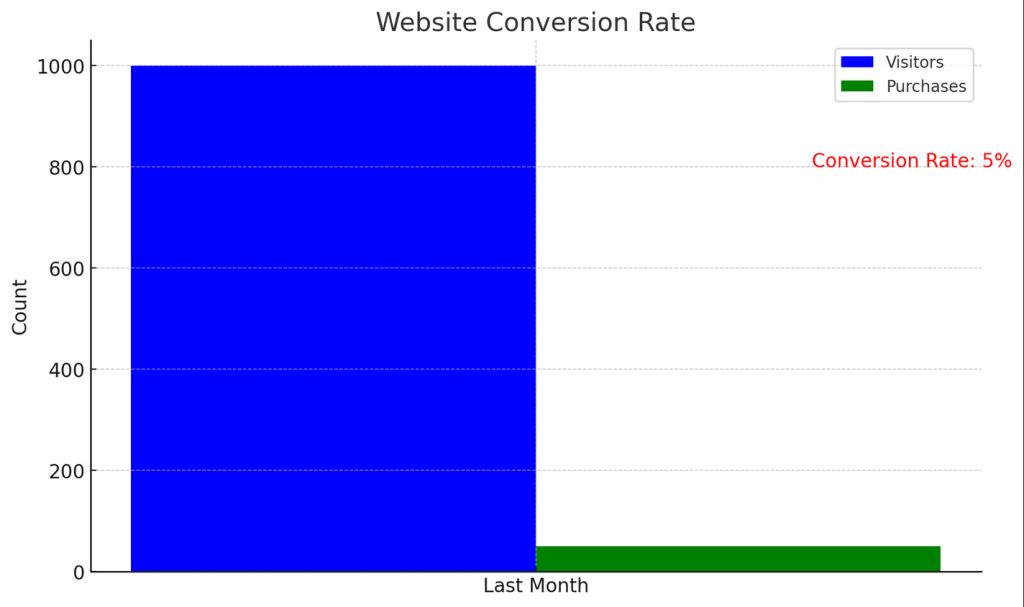
Visitor-to-lead conversion rate
Think of your sales funnel like a fishing net: you cast it wide to attract fish (visitors) and then gradually guide them towards the boat (becoming paying customers).
Your visitor-to-lead conversion rate is how many of those fish you manage to hook by getting them on your email list or collecting their contact info through form submissions.
While there’s no magic number, a good benchmark for visitor-to-lead conversion rate is typically between 2-5%, depending on your industry and target audience.
To improve this rate, consider optimizing your signup forms (make them short and easy to fill out), offering valuable incentives (like a free ebook or discount code), or using targeted pop-ups to capture email addresses.
Click-through conversion rate
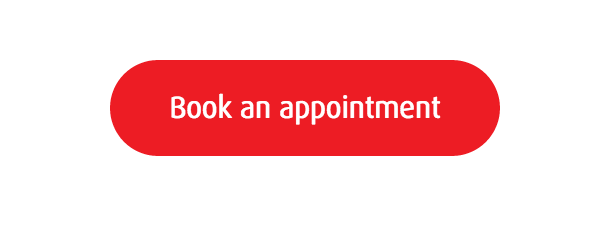
Next: let’s talk about the power of a good call to action (CTA) – those buttons or links that say “Shop Now,” “Sign Up,” or “Book an Appointment”
Your click-through conversion rate measures how often people click on these action buttons and then actually follow through with the desired action, like making a purchase or filling out a signup form.
Let’s say you run a small online store selling handmade jewelry. You send out an email campaign featuring your latest collection, with a prominent “Browse Collection” CTA button.
If 1,000 people open your email and 100 click on the button, your click-through rate is 10%. But if 7 of those people actually make a purchase, your click-through conversion rate is 7%.
While click-through rates can be a useful starting point, the true measure of success lies in the click-through conversion rate. This is where you see the direct impact of your marketing strategies and conversion optimization efforts.
Customer conversion rates
Customer conversion rates tell you how well you’re turning prospects into buyers. Take a tech startup selling project management software. They demo their product to 100 companies, but only 10 sign up. That’s a 10% conversion rate.
Why does this matter? Because these conversion rates reflect your customer experience. When people love your product, good things happen:
- Happy users share glowing customer testimonials, drawing in new clients.
- Word spreads, and your sales process gets smoother as trust builds.
- Your blog posts and videos (content marketing) resonate more, because they’re based on real user needs.
- All your marketing efforts start clicking, perfectly matching your business model.
The result? More loyal customers. That project manager who signed up now champions your software across their whole company. They renew year after year, maybe even upgrade.
This is the power of focusing on conversions – it goes beyond one sale, it potentially creates a customer for you for life.
Website conversion funnel

Now that we’ve explored what conversion rates are and why they’re important, let’s break down the website conversion funnel using a real-world example.
Let’s say you own an online store specializing in beautiful handcrafted wooden furniture.

Here’s what your funnel would look like:
-
Awareness Stage: Your target customer is scrolling through Google looking for inspiration for their living room redesign. They come across a visually appealing optimized Google Ad of yours – it sparks their interest, and they click through to your website.
-
Interest and Evaluation Stages: The potential customer lands on your product page and is impressed by the high-resolution images of the coffee table from different angles.
-
Decision Stage: The customer is now seriously considering a purchase. They compare your coffee table to similar products on other websites and read through customer reviews. To help them make a decision, you’ve added a “Shop the Look” section featuring complementary furniture pieces and a live chat option for answering any questions they might have.
-
Action Stage: The customer is ready to buy! They add the coffee table to their cart and proceed to checkout. You’ve optimized the checkout process to make it easy for them to complete their purchase, minimizing the risk of cart abandonment.
-
Re-engagement: A few days later, the customer receives a personalized email from you thanking them for their purchase and providing care tips for their new coffee table. This helps build a lasting relationship with the customer and encourages repeat business.
By understanding and optimizing each stage of the sales cycle, you can turn more browsers into buyers. Using funnel visualization, you can identify and address any drop-off points, reducing abandonment rates and maximizing checkout conversion optimization.
Pro Tip: Speaking of live chat options, it’s a conversion method we put into practice ourselves here at Nomadic:
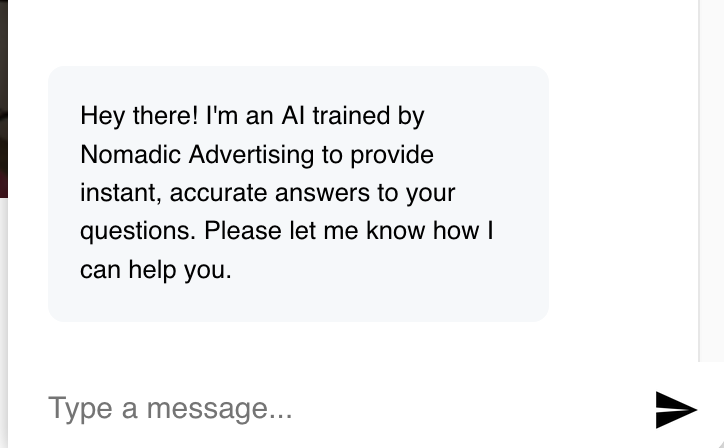
And if it’s something you’d love to see on your site too we’d be more than happy to help.
Website mobile conversion
We’re all spending more time on our mobile devices, and your customers are no different. However, as of June 2024, the average mobile e-commerce conversion rate is only 2.89%, meaning there’s a massive opportunity with your mobile users.
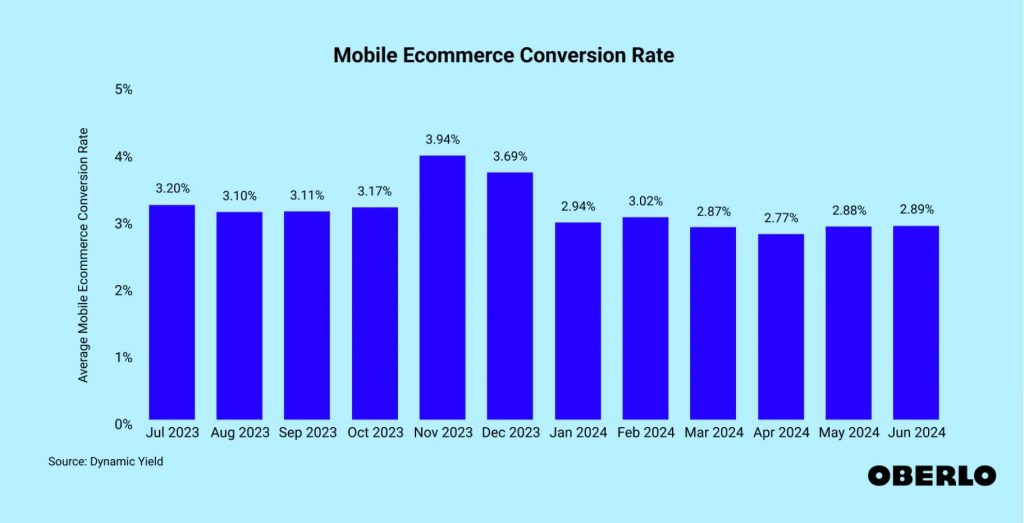
A mobile-friendly website is essential. Responsive design that adapts to different screen sizes, quick-loading pages, and easy-to-use navigation are non-negotiable. Think of it as creating a well-organized store: simple to use, with an effortless checkout process.
That’s the experience you need to create on mobile.
Go beyond the basics with A/B testing to fine-tune your site. Explore mobile-specific features like click-to-call buttons and mobile wallets.
Even consider developing a dedicated mobile app for a more personalized experience. This multifaceted approach will help you grow your business across devices and increase your all-important conversions.
How to track conversions
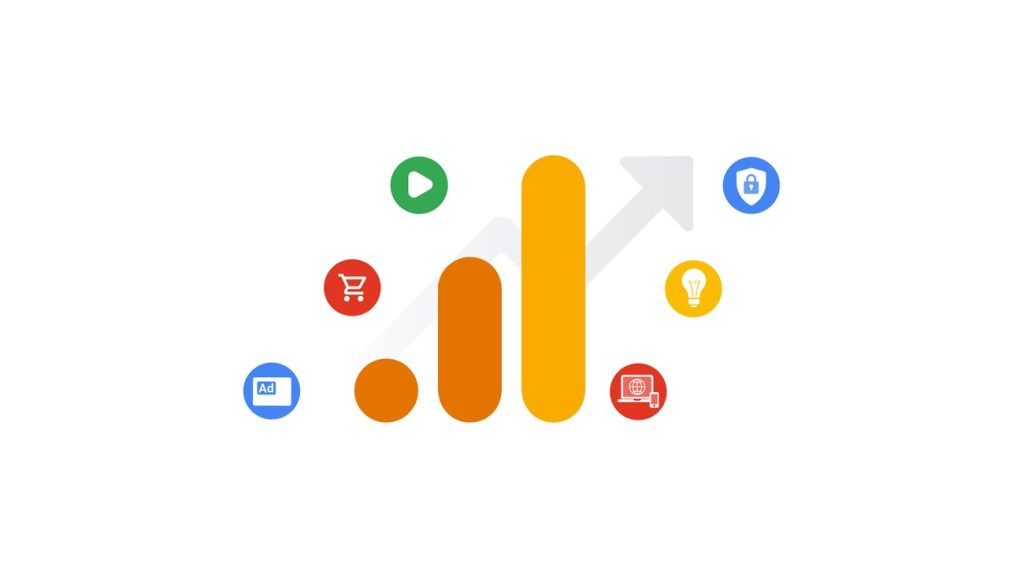
Are you curious about how to track all of that? Google Analytics gives you an in-depth behind-the-scenes peak with:
- Goals and Conversions: Track the actions that matter most to your business, like purchases or sign-ups.
- Event Tracking: See how users engage with specific elements, like buttons or videos.
- Funnel Visualization: Follow the user’s path to purchase, and spot any drop-off points.
- Ecommerce Tracking: Get detailed reports on product performance and sales.
- Audience Segmentation: See which groups are converting, and tweak your approach accordingly.
Examples of the best-converting websites
To wrap up, let’s look at some websites putting many of our tips into practice.
Amazon:

Consumers trust Amazon, making them more likely to convert on the platform, especially since they often visit with the intent to make a purchase. This trust and purchase intent contribute to Amazon’s impressive average conversion rate of around 10% – significantly higher than that of a typical e-commerce store.
Amazon also excels in user experience with its quick loading times, regular Prime Day sales, and a simple, direct checkout option.
In fact, it does it so well that a higher percentage of online shoppers in the US now use Amazon Search instead of Google!
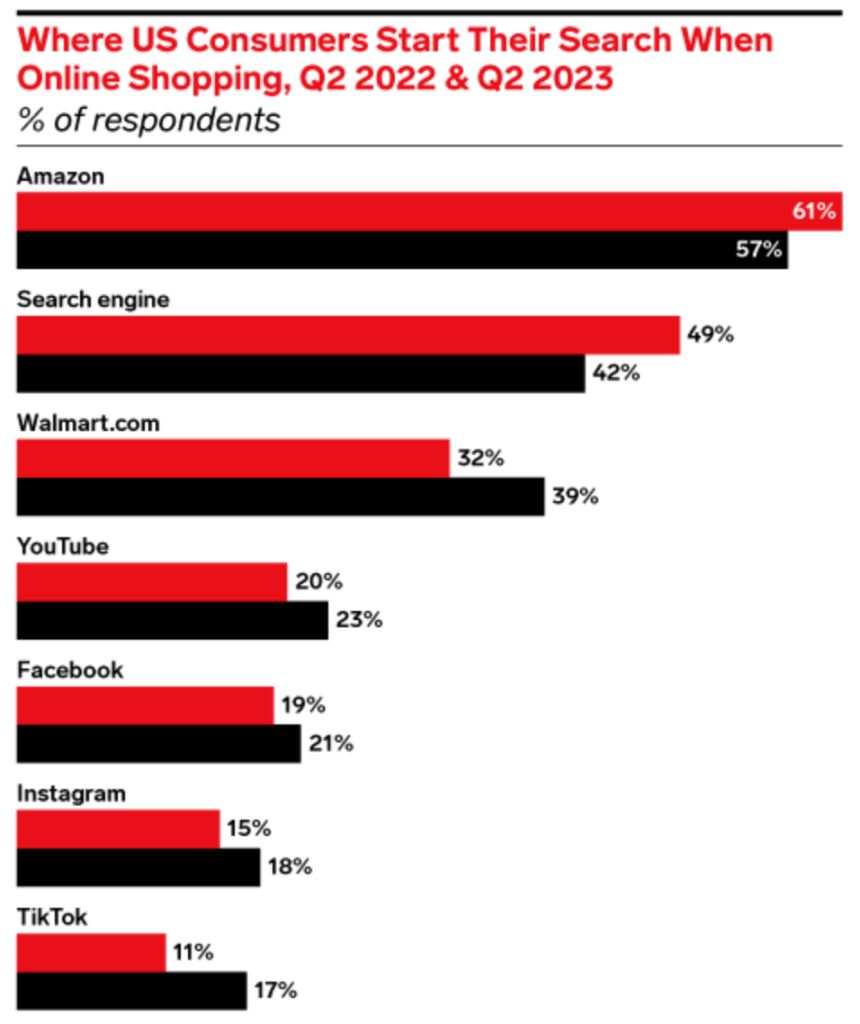
This efficiency contributes to a higher conversion rate, encouraging frequent purchases. And the next-day delivery for Prime members is the icing on the cake.
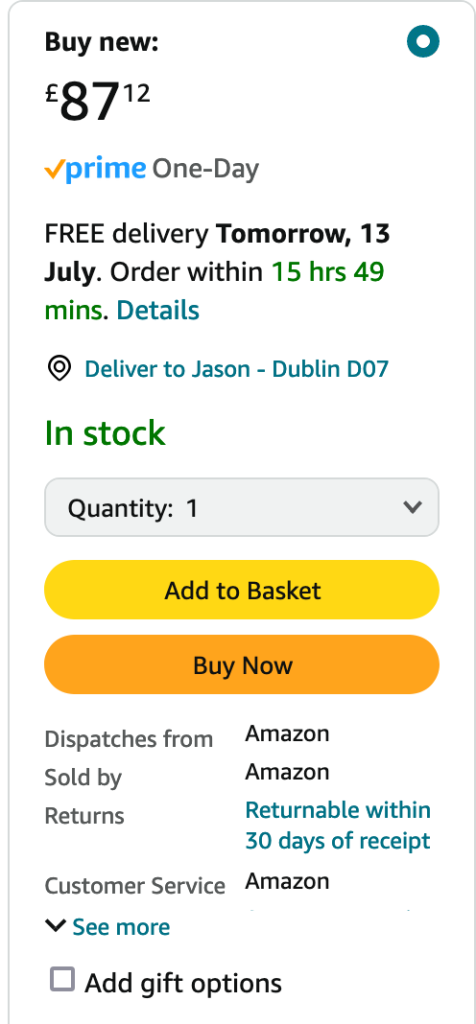
Apple:
Apple presents its products with a focus on their aesthetics and usability, using a layout that leads users towards making a purchase. This clarity and ease of use help improve their conversion rates.

Then there’s the clever up-sell at checkout. Apple laptops aren’t upgradable after you buy them, so do you spend the extra money on extra RAM and SSD storage now to future-proof it?
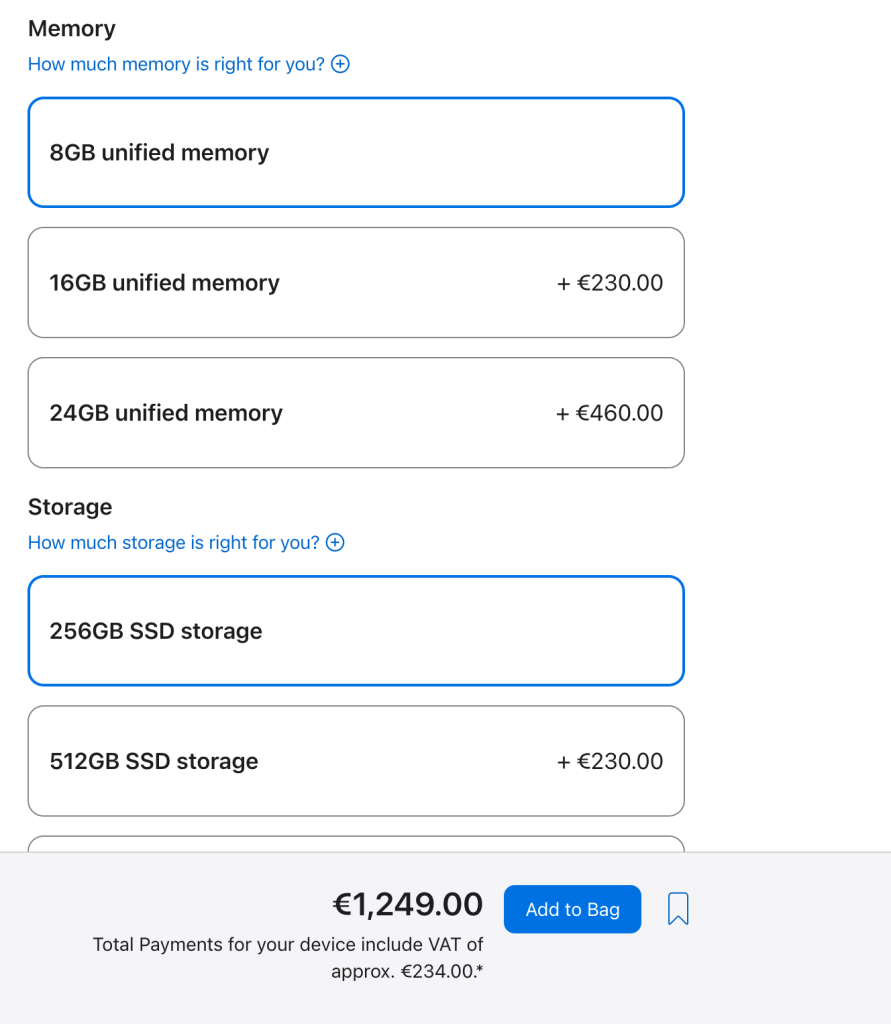
At this point of the funnel, the buyer is very committed and many will spend the extra money. But if Apple were to mention these upgrades on the Homepage we believe they’d convert a lot fewer customers.
Slack
Slack, the popular communication platform, effectively demonstrates numerous factors that contribute to successful conversion rate optimization. Its website employs a simple, visually appealing design, highlighting the platform’s core function of bringing teams together in a central hub.
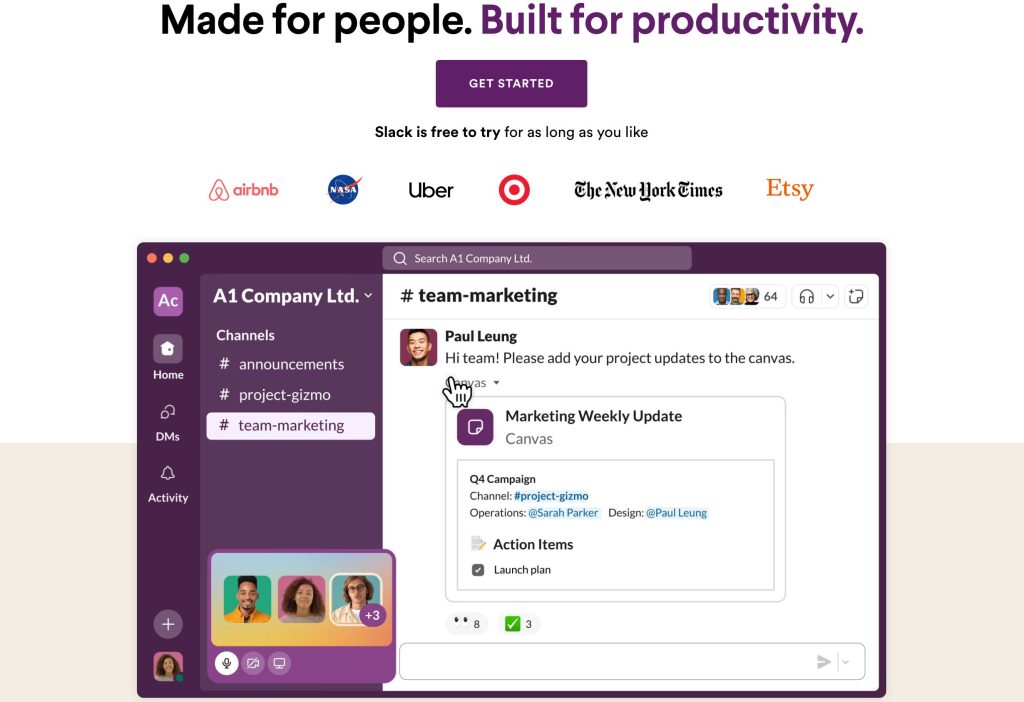
These websites implement strategies like optimized load times, effective user interfaces, and clear navigation paths, which contribute significantly to their ability to convert visitors into customers.
Ready to Turn Your Website into a Profitable Destination?
At Nomadic, we help businesses like yours turn clicks into cash.
Let’s chat. Book a free 30-minute consultation today and discover how we can make a huge impact on your bottom line.
Key Takeaways
- Website conversion measures how many visitors complete desired actions, like purchases or sign-ups.
- Good conversion rates vary by industry. Focus on ongoing improvement. Track metrics like macro/micro conversions, click-through rates, and bounce rates.
- The conversion funnel guides visitors from awareness to purchase. Refine each stage to reduce drop-offs and see an increase in conversion.
- Mobile optimization matters. Responsive design and efficient processes improve conversions across devices.





